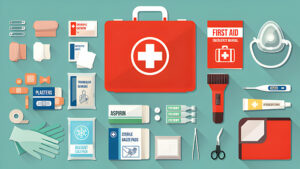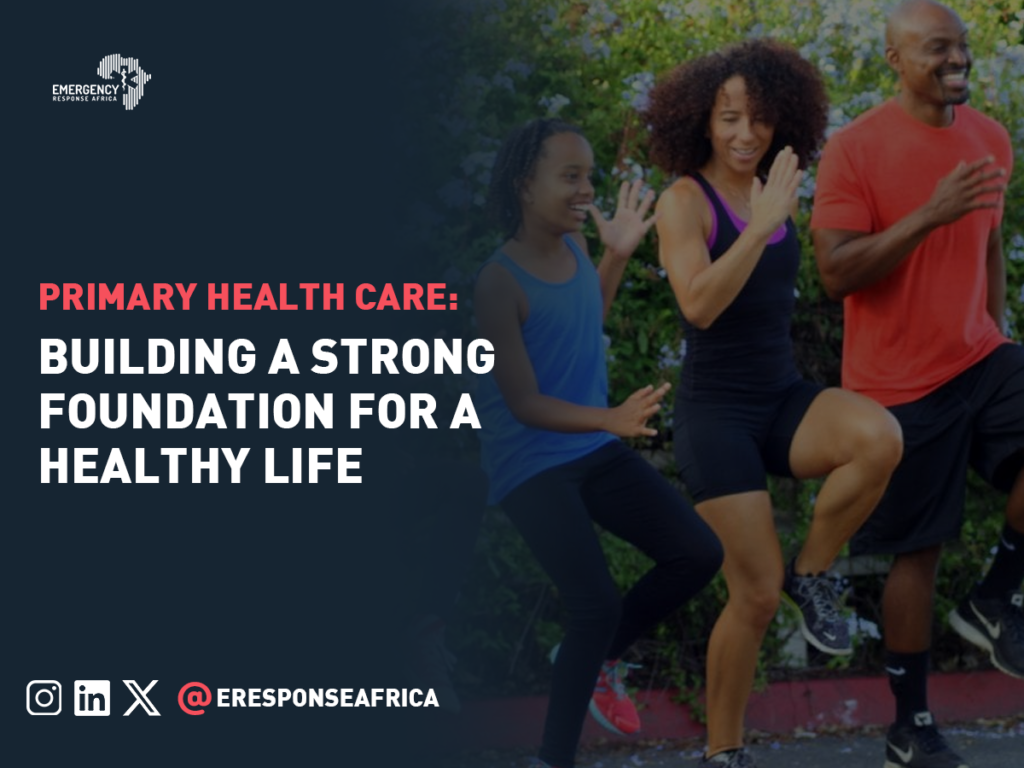Primary health care is the cornerstone of a healthy population. It serves as the first point of contact for individuals with the healthcare system, providing essential services that address various health needs.
Primary health care plays a critical role in promoting overall well-being by focusing on prevention, early intervention, and continuous care. By establishing a strong foundation for health through primary health care, individuals are empowered to manage their health proactively and live longer healthier lives.
Whether you’re a healthcare professional, a policymaker passionate about public health, or someone seeking health education, this article will equip you with a comprehensive understanding of this fundamental aspect of healthcare.
Let’s get right in.
Primary Health Care and What It Means
Primary healthcare forms the bedrock of a large healthcare system, providing the essential level of care that individuals and families need within their communities. Primary care providers, such as general practitioners, pediatricians, and nurse practitioners, act as the first point of contact for various health concerns.
These services can encompass preventive measures like immunizations and routine health screenings, diagnosing and treating acute illnesses and injuries, and managing chronic conditions like diabetes or hypertension. It also plays a vital role in mental health care, offering support and referrals to specialists when necessary.
Key Factors That Make Primary Health Care Stand Out
There are key principles that distinguish primary health care from other areas of healthcare. They include:
1. Accessibility
Primary care services should be conveniently located, with flexible hours and affordable costs. Cultural sensitivity is also crucial, as it ensures services are tailored to the diverse populations’ specific needs and preferences. This fosters trust and encourages individuals to proactively seek care.
2. Community Participation
Community involvement is another top priority of primary health care. High-quality primary care is naturally a team effort among the clinicians and the patient population they care for. Empowering this collaborative future enables views at the community level and on the social determinants of health.
With an understanding of this, primary care health workers can come up with interventions and programs that could generally meet the total needs of these communities for the good health of their people.
3. Multifaceted in Nature
Basic health care takes into account the multifaceted nature of health and acknowledges the interdependence of physical, psychological, and social dimensions of well-being.
As they address the varied concerns of health, primary care providers could consequently guide patients in making intelligent decisions about their wellness and leading to a better standard of living. With this holistic approach to healthcare, people can not only live a better life but also contribute to a higher level of productivity at the national level.
Overall, healthcare can not only enhance the wellness of the individual but also play an integral role in making the country’s population healthier and more productive.
Importance of Emergency Response Care in Primary Health Care
Ensuring emergency care is provided through primary healthcare represents a solidification of the entire healthcare system. Community safety and health can be best promoted by delivering proper training and resources to caregivers in key health centers, enabling them to:
1. Save Lives and Minimize Complications
Establishing facilities and health personnel in difficult areas will help in the recognition and treatment of conditions like cardiac arrest, stroke, and severe allergic reactions that manifest earlier or need to be done very quickly.
Time here is of immense importance because it is within this timely intervention window that damage to the tissue can be prevented with prompt care, creating optimal chances for full healing. Primary care providers who possess the necessary intelligence and ability to take quick actions can save lives by giving this interim emergency treatment, which is different from the one the patient will receive in a hospital.
2. Effective Triage and Patient Prioritization
General practitioners, together with primary health workers, perform this vital function of triaging, or the process of swiftly evaluating a patient’s condition in order to provide care based on the degree of their illness or injury. It is to make sure those in the best state have priority in getting medical treatment.
Moreover, primary care facilities can operate like stabilizing stations, with initial treatment and monitoring of patients to stabilize their conditions and then safely transfer them to a hospital for further treatment. Here, the role of primary care providers in such locations can be exceptionally pivotal, as they might have the only means of offering the early medical attention necessary to secure good patient results.
3. Equipping Providers for Effective Care
The coverage of primary care providers with adequate training and resources is the mainstay of emergency care in the individual’s healthcare context. Through this, they will be trained on the basics, such as BLS (basic life support) and ACLS (advanced cardiac life support) protocols, equipping them to take charge of cases like cardiac arrest or respiratory emergencies while gaining confidence along the way.
The availability of basic equipment such as airway management tools and oxygen tanks can increase the efficiency of emergency treatment provided in a primary clinic beyond doubt.
How to Use First Aid Kits

It is important to note that, besides primary healthcare professionals who offer a good security net, taking part in basic first-aid training can greatly save lives. Having a readily accessible first-aid kit and being familiar with how to use it in situations where professional medical support is not yet available is when this kit may mean the difference between life and death.
Importance of First Aid Kits
1. Immediate Intervention
First aid is really important in emergencies, such as after an accident or sudden sickness. First aid can be used to prevent complications from the wounds, minimize damage to the tissue, and even save lives.
By learning how to use first aid in the first aid kit, you can provide immediate basic care until the arrival of professional medical help. It is a very important factor, especially when you have been in remote areas, and the reach of medical attention may be delayed as you travel after a disaster.
2. Peace of Mind
Keeping a good stockpile of the first-aid kit handy gives one a sense of control and preparedness. Knowing that you can deal with minor injuries or emergencies helps assure calmness, allowing you to act effectively in distressing situations.
Common Situations Where First Aid Makes a Difference
1. Minor Cuts and Scrapes
Everything, from cuts and bruises to abrasions, can be attended to with bandages, antiseptic wipes, and adhesive dressings readily available in most first-aid kits. By advocating for appropriate first aid, infection can be prevented while the healing process accelerates
2. Burns
Ice packs and burn dressings commonly found in first-aid kits ensure immediate relief of pain and avoid damage to the tissues from minor burns. In cases of a more severe burn, prompt medical treatment is important.
3. Minor Bleeding
You will need to apply direct pressure to the wound and use fire to control minor bleeding until you can get medical help. In cases of severe bleeding that can’t be controlled by direct pressure, you need to seek immediate medical aid.
4. Choking
Having Heimlich maneuver knowledge for adults and kids, such as choking first aid tricks, could be lifesaving. It can dislodge an object blocking the airway and prevent suffocation.
5. Allergic Reactions
First-aid kits typically contain antihistamines, which can help relieve minor allergic reactions such as hives or swelling. However, it is crucial to note that first aid cannot replace proper medical treatment in severe allergic reactions, especially those related to difficulty breathing or anaphylaxis.
6. Sudden Illness
Other first-aid kits can have thermometers or over-the-counter medication, such as pain relievers, but they should urge individuals to consult a physician before including them.
Read Also: FIRST AID AND CPR TRAINING IN LAGOS: WHAT OUR CLIENTS ARE SAYING
Essential First-Aid Kit Items and Techniques
Here’s a breakdown of some essential first-aid kit components and basic techniques for their use:
1. Sterile Adhesive Bandages (various sizes)

Clean and band-aid minor cuts, scratches, and wounds to prevent them from getting infected and aid the healing process. Just remember that for these kinds of wounds, which may be oozy, go for non-stick varieties of dressing.
2. Antiseptic Wipes or Solution

Clean the affected cuts and the nearby places to avoid infections. Try to use no strong chemicals or antiseptics for your eyes.
3. Gauze Pads (various sizes)

Use pressure dressings to stop bleeding and soak up the fluids in the wounds. Gauze pads can also be shaped into sterile dressings to cover larger wounds.
4. Triangular Bandages and Elastic Bandages

Offer support for strains and sprains or prepare arm slings for injured persons, which causes an irregularity in rhythm that should be in time with the rest of your heartbeat. Besides the purpose of collapsed bandages, they can also be used to shape makeshift splints for broken bones.
5. Safety Pins

Bandage it securely or sling it firmly to prevent it from being so tight that it stops blood flow.

6. Scissors and Tweezers

Take out splinters, ticks, or any other debris from cuts (check these first to be sterilized with alcohol wipes or boiling water to prevent infections).
7. Instant Cold Compress

It provides relief from swelling and inflammation caused by minor injuries, such as sprains and bruises. Do not place ice directly on the skin; wrap it in a clean cloth before applying the cold compress.
8. Non-Prescription Pain Relievers

It provides that relief until proper medical treatment is found. Before the medication selection, consider the age and any accompanying medical conditions the patient may have(Consult a doctor before including these).
Ensure the following:
- Being up-to-date with checking and replacing the irretrievable goods in your kit, including expired pills and sterile supplies, is paramount.
- Given that, explore the option of enrolling in basic first-aid training to follow the proper steps of applying first-aid supplies and responding to emergencies. This experience may involve practical learning and progressively boost your readiness to approach various situations.
- Always consult a medical practitioner for injuries or health emergencies that threaten life at all times. Primarily aimed at staving off the grave condition or arising of a more serious issue until the patient receives immediate medical attention.
- Combining an initial first-aid skill and a bleach kit for your health approach is the ability to act rather than just react to keep you healthy.
Instant and responsive efforts during medical emergencies are vital and can highly impact patients’ lives while reducing additional complications. On the other hand, something as simple as teaching individuals the basics of first-aid measures and techniques will enable them to provide early care until professional medical attention arrives.
Taking Charge of Your Health
Your health is your wealth. Investing your time in nurturing it will reward you more than anything else in your life. Primary healthcare services offer people opportunities to maintain good health and live with no or less need for hospitals, address prevention measures, and assist with chronic illnesses, among other services.
Although it’s good if you get to the doctor immediately if you feel something unusual, you should also stick to routine check-ups, health screenings, and consultations with your primary care provider in advance of possible complications.
There is no place greater than Emergency Response Africa to prepare you with the knowledge and means for preserving your health and that of your loved ones.
We offer a variety of services to support your well-being, including emergency response planning to help you learn how to make arrangements so you are well equipped while also ensuring that you have transport options ready and timely medical attention should you find yourself in need.
Also, first-aid and CPR training provide the first medical help in emergencies and be confident in administering CPR. Moreover, by taking advantage of these resources, you can spend time gaining a better understanding of how to be a healthier person and consequently develop a stronger future.



